Editor's note: For an entire month starting August 17, CGTN has brought this year's Great Wildebeest Migration to your living room with our new series "Digital Safari". Let's jump onboard and get to know more about these amazing wild animals and the wonderful nature.
Impalas are medium-sized antelopes that are known for their long and spiral horns. Only male impalas have horns which are used to challenge each other and fight. The horns can grow up to 75 centimeters long, but it takes many years for the horns to reach their full length. Therefore, it's rare for a young impala to become dominant in a group.
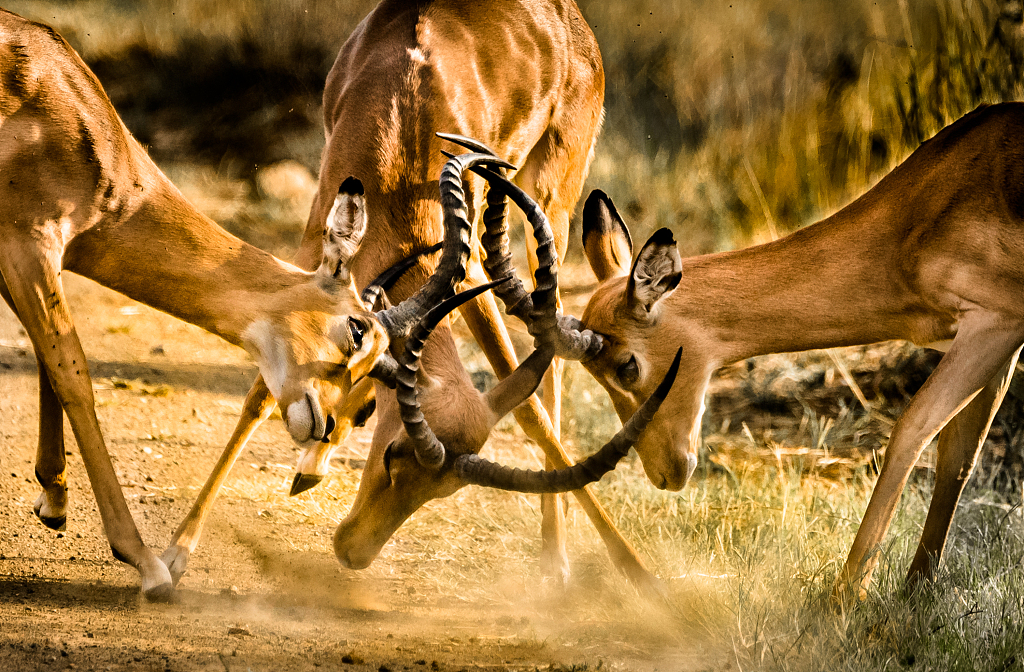
Impalas use their impressive horns to fight each other. /VCG
Impalas use their impressive horns to fight each other. /VCG
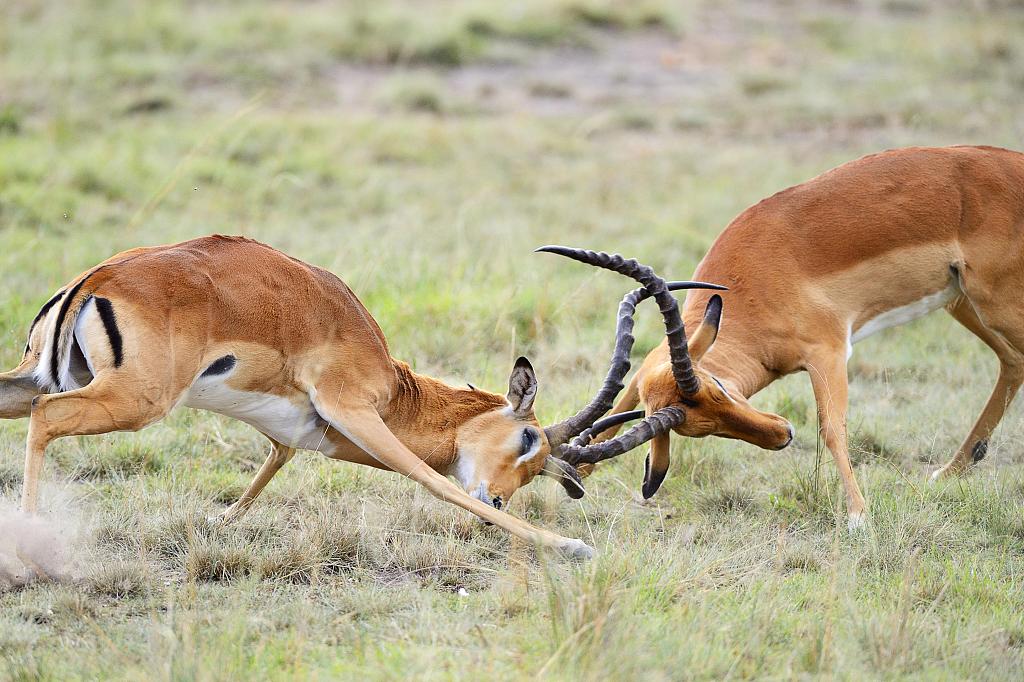
Fierce fight between two impalas. /VCG
Fierce fight between two impalas. /VCG
Unique in this animal are the black patches on their back legs. Beneath these patches are scent glands which play a special role in searching for each other. When they are attacked, impalas run and scatter in all directions to confuse the predator. The scent is released from the glands during the flee process, so later they can find each other and gather again. It's rare to see an impala on its own. They usually live in herds to decrease the chances of being attacked.
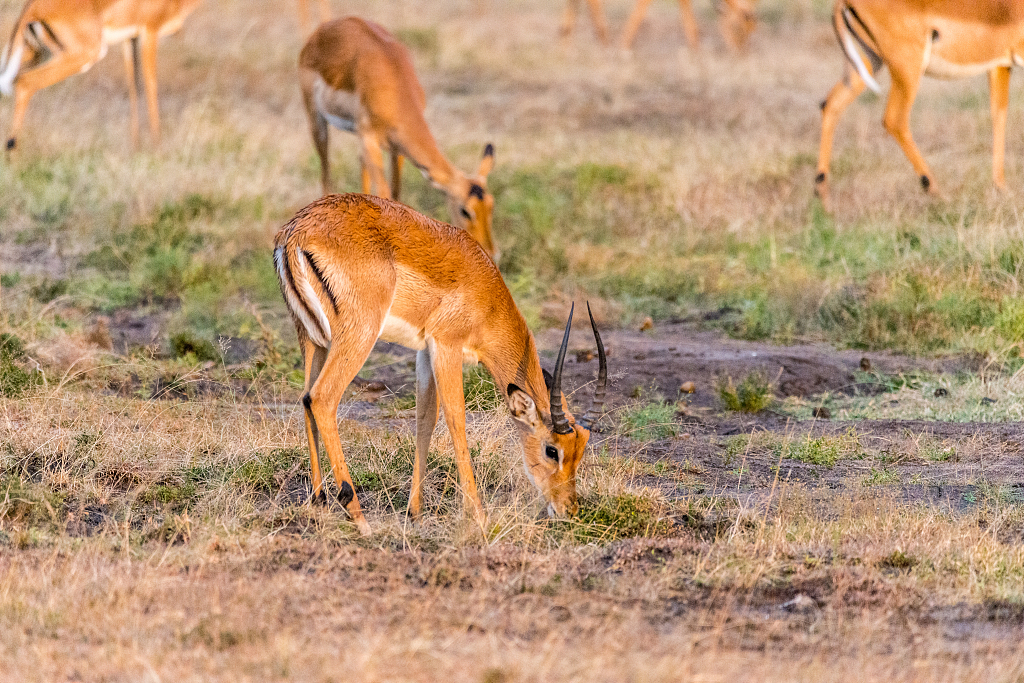
Do you see the black patches on impalas' back legs? /VCG
Do you see the black patches on impalas' back legs? /VCG
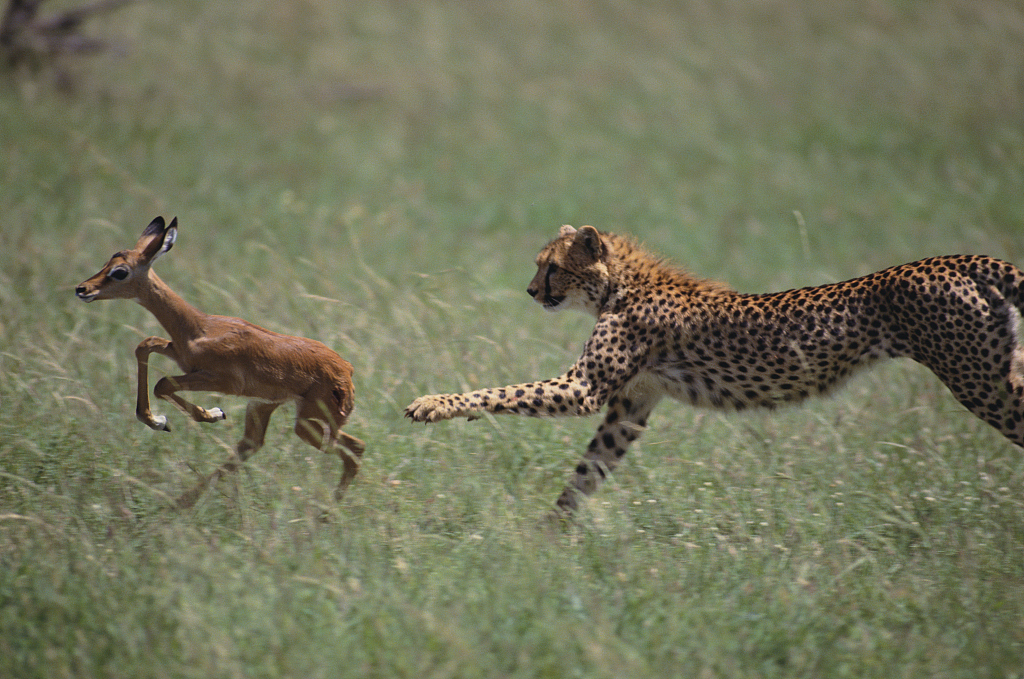
Cheetahs and lions feed on impalas. /VCG
Cheetahs and lions feed on impalas. /VCG
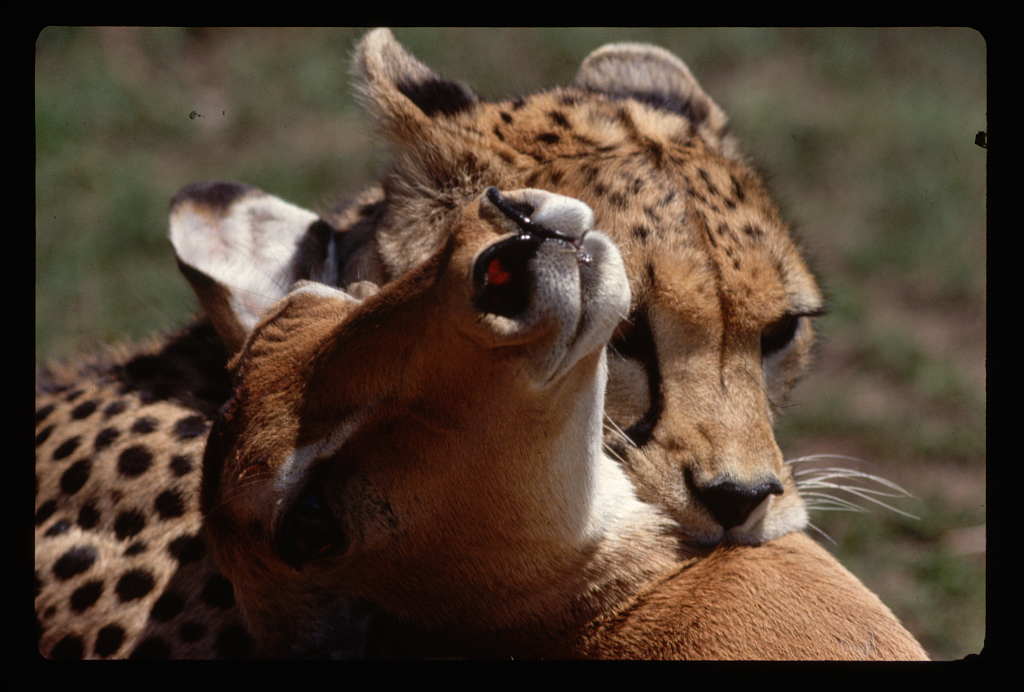
An impala got attacked. /VCG
An impala got attacked. /VCG
Impalas are fast runners, sometimes going over 60km/h and they can also leap distances up to 33 feet. Therefore, this animal that mainly feeds on fruits, flowers and barks are no easy prey for predators.
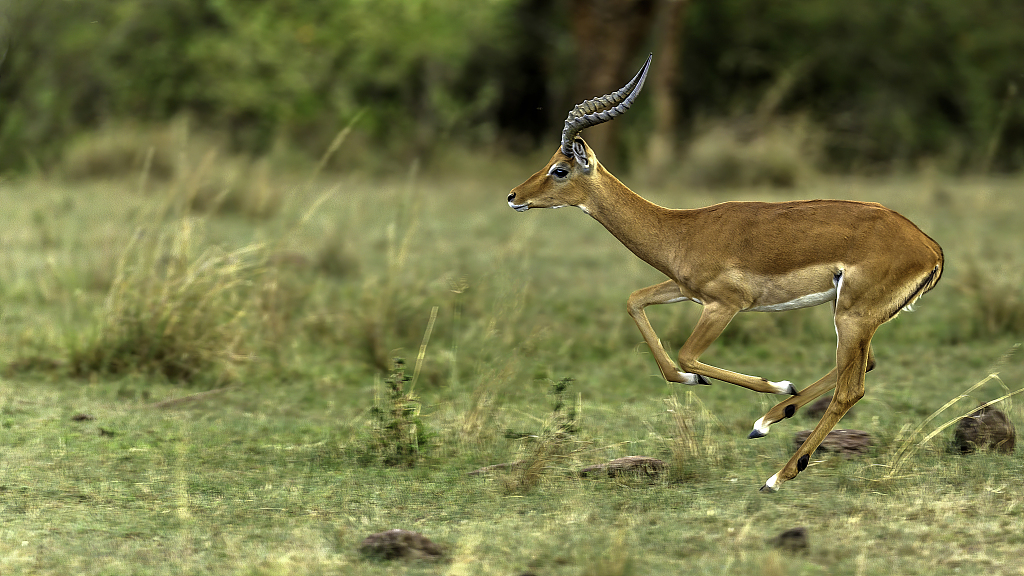
Impalas are very agile. /VCG
Impalas are very agile. /VCG
Currently, the animal is part of the "least concern" list by the International Union for Conservation of Nature Red List. The population of impalas is stable, but is still threatened by livestock farming, hunting, and droughts.